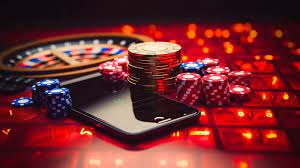In the realm of gambling, few games hold as much allure and fascination as the slot machine. Known by various names around the world – from “fruit machines” in the UK to “pokies” in Australia – these mesmerizing contraptions have captured the hearts of millions, offering not just the prospect of winning big, but also an immersive RajaAkurat that transcends mere gameplay. Let’s embark on a journey through the history, mechanics, and enduring popularity of this iconic game.
A Glimpse into the Past
The origins of the slot machine can be traced back to the late 19th century, with the invention of the first mechanical slot by Charles August Fey in 1894. Fey’s creation, the Liberty Bell, featured three spinning reels adorned with symbols like horseshoes, diamonds, spades, hearts, and, of course, the Liberty Bell. Winning occurred when the reels aligned to reveal a specific combination, with the highest payout awarded for three Liberty Bells in a row.
Fey’s invention was a sensation, sparking a wave of interest in mechanical gambling devices. Over the years, slots evolved, incorporating new features like electric lights, sound effects, and the ability to offer various payouts based on the combination of symbols. The introduction of electromechanical machines in the 1960s paved the way for the modern video slot, which revolutionized the industry with its vibrant graphics, interactive bonus rounds, and themed gameplay.
The Mechanics Behind the Magic
At its core, a slot machine is a deceptively simple device. Whether mechanical or electronic, it consists of three or more reels adorned with a multitude of symbols. When a player inserts a coin or wager, the reels spin independently before coming to a stop, revealing a random assortment of symbols. If the combination matches a predetermined winning pattern, the player receives a payout, the size of which is determined by the game’s payout table.
While the outcome of each spin may seem random, modern slot machines operate on the principle of a pseudo-random number generator (PRNG), which ensures that every result is statistically independent and unpredictable. This technology, coupled with rigorous regulatory oversight, ensures fairness and transparency in gameplay, giving players confidence in the integrity of the game.
Beyond the Reels: The Evolution of Slot Culture
Slot machines are more than just a means of gambling; they are cultural icons that have left an indelible mark on society. From the glittering casinos of Las Vegas to the corner pubs of England, slots occupy a special place in the collective imagination, symbolizing the thrill of risk and the possibility of fortune.
In recent years, the rise of online casinos has further expanded the reach of slots, allowing players to enjoy their favorite games from the comfort of their homes. The convenience of mobile gaming has only accelerated this trend, with a vast array of slot apps available for smartphones and tablets, catering to every taste and preference.
The Allure of the Jackpot
Central to the appeal of slot machines is the tantalizing prospect of hitting the jackpot – that elusive combination of symbols that unlocks untold riches. While the odds of winning the top prize may be slim, the dream of a life-changing windfall is enough to keep players coming back for more, fueling a multibillion-dollar industry that shows no signs of slowing down.
Moreover, modern slots often feature progressive jackpots, which grow incrementally with each wager placed on the game. This adds an extra layer of excitement, as players vie for the chance to claim a prize that can reach astronomical sums, transforming ordinary people into overnight millionaires.
Conclusion
In an ever-changing world, where technology continues to reshape the way we live and play, slot machines remain a constant source of entertainment and intrigue. From their humble beginnings as mechanical novelties to their current
